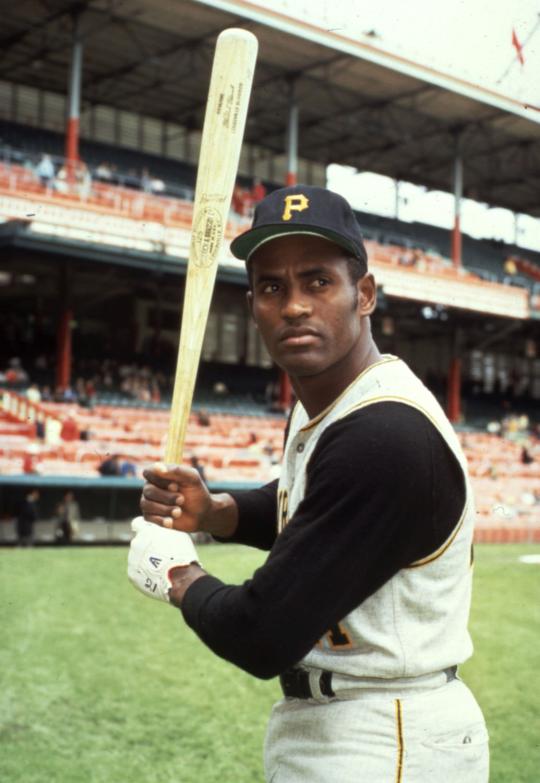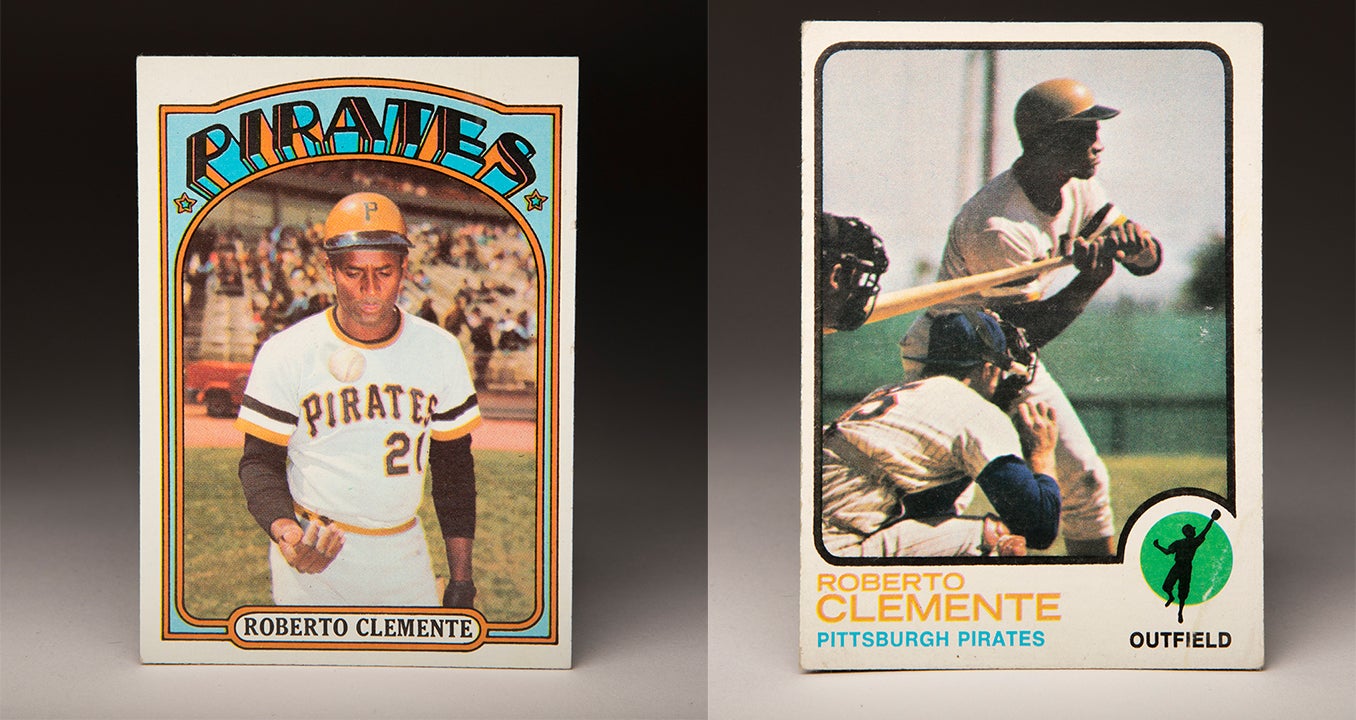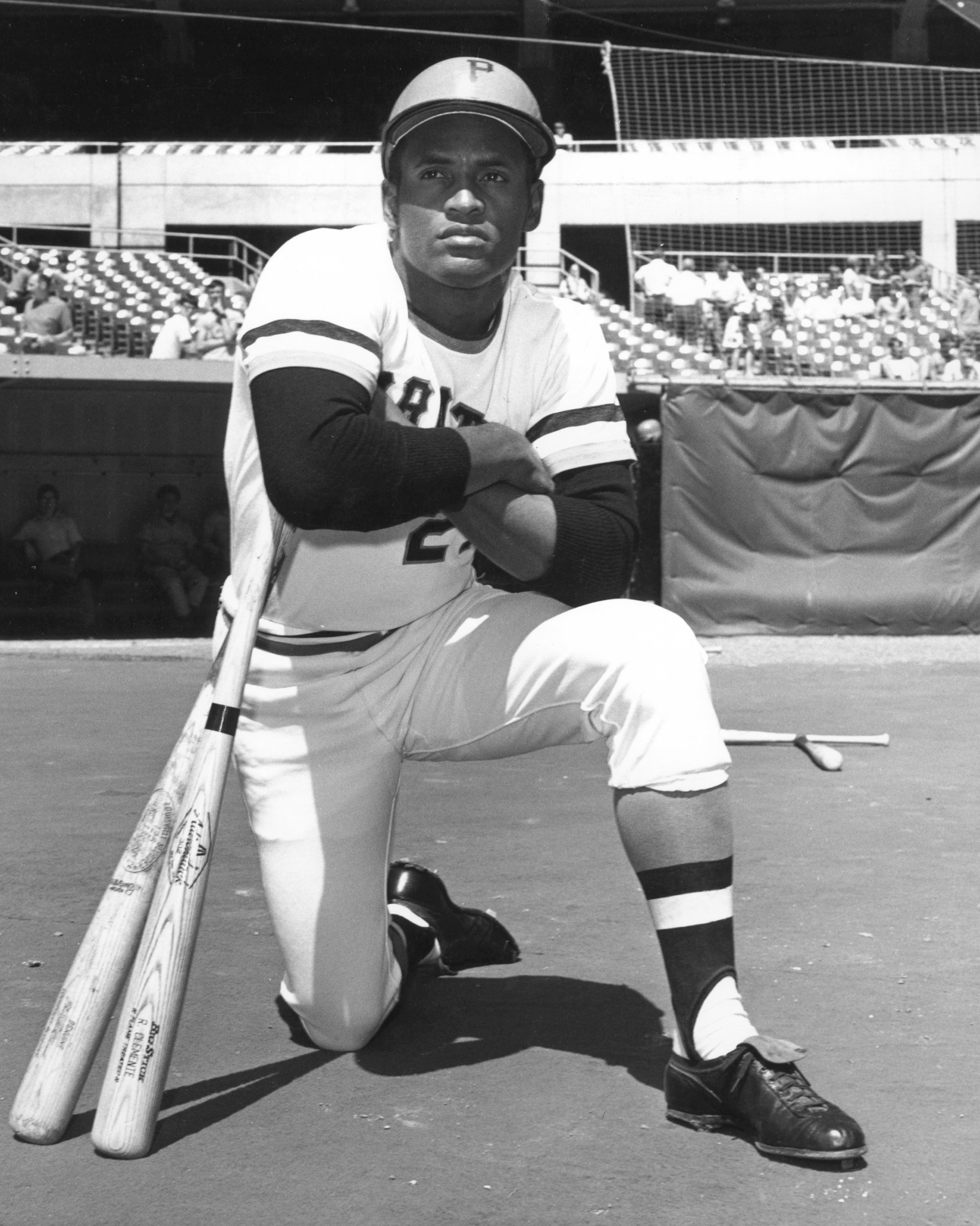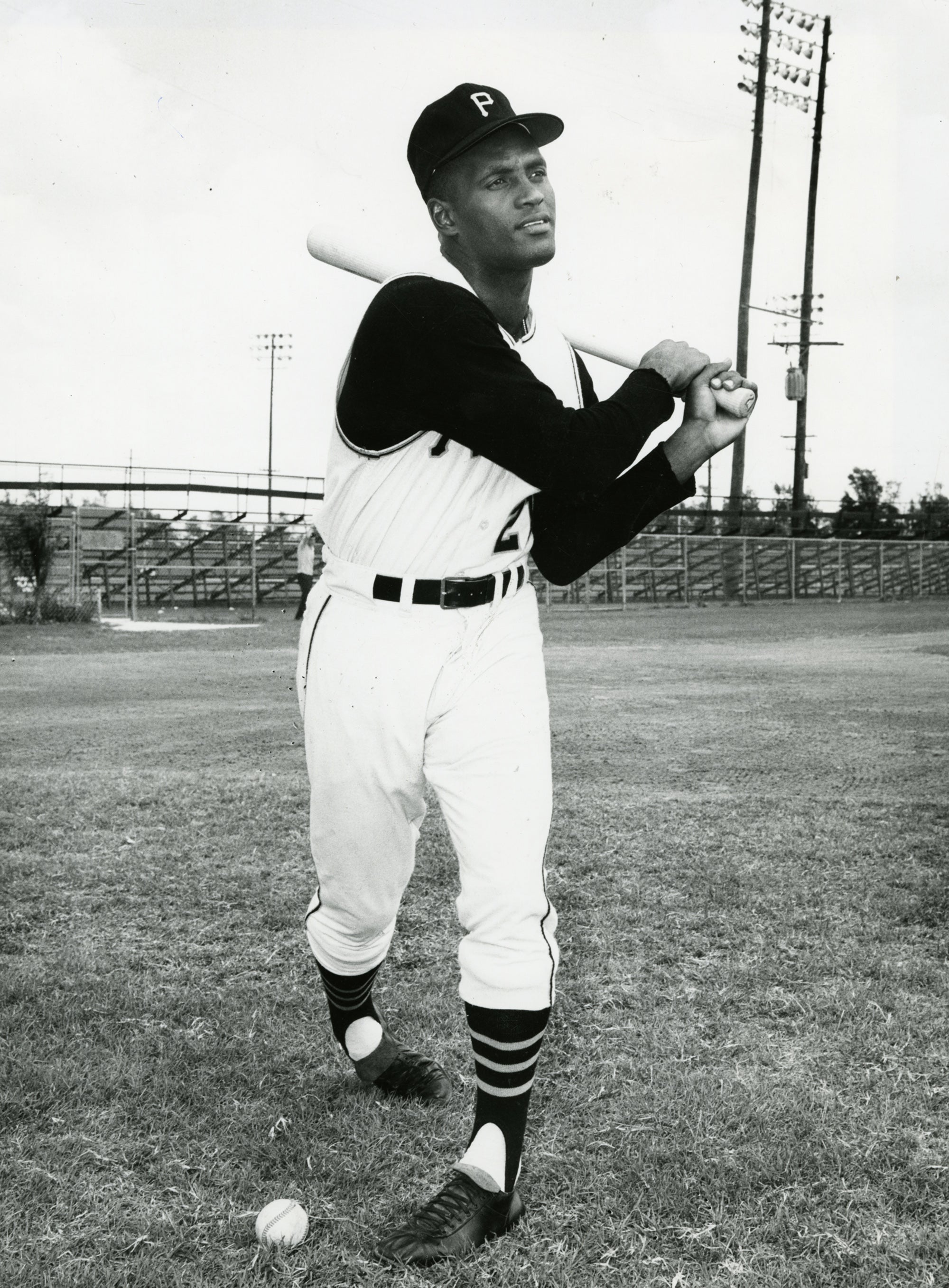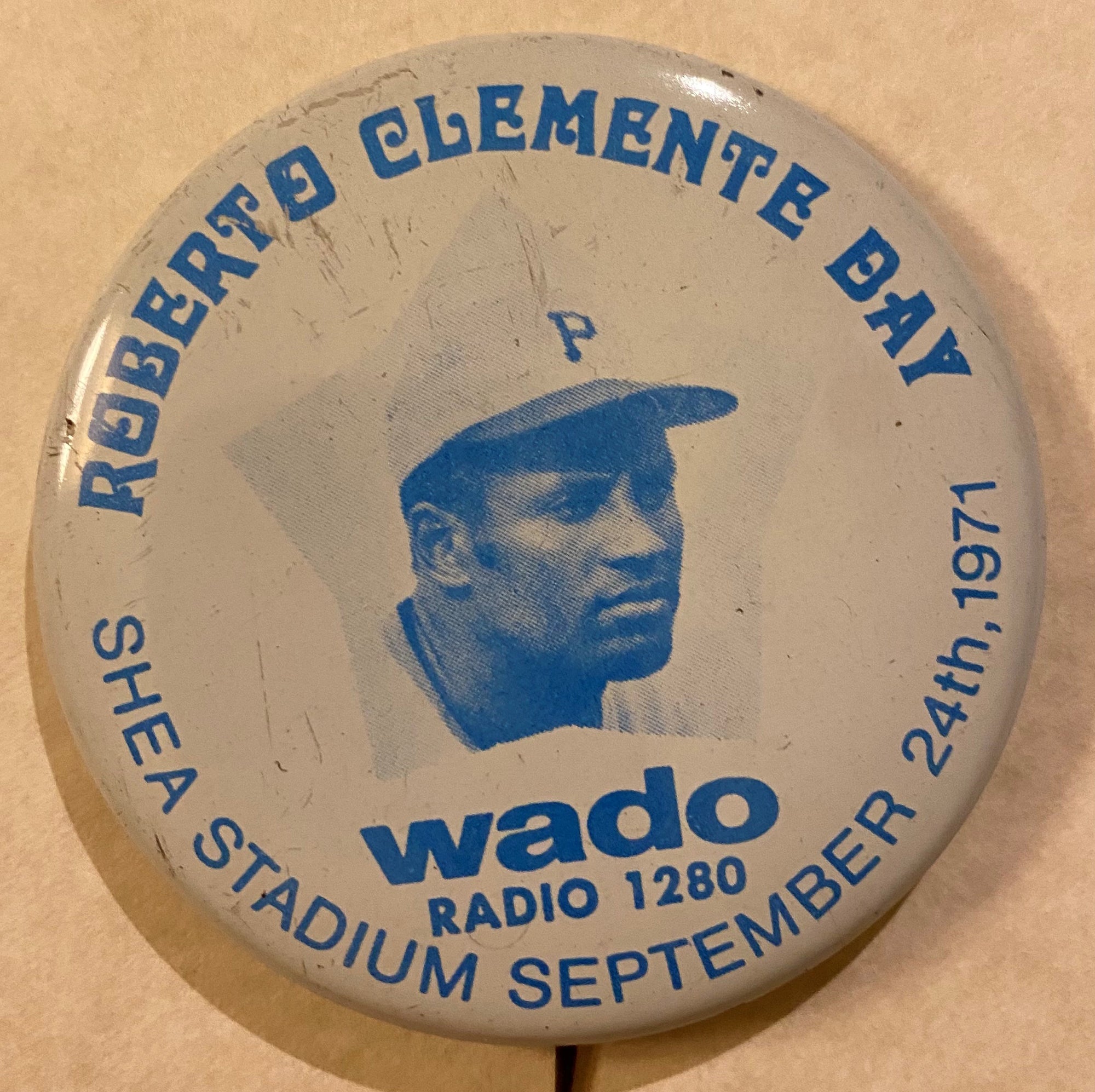- Home
- Our Stories
- Clemente’s legacy remains vibrant source of inspiration
Clemente’s legacy remains vibrant source of inspiration
Throughout 2021, we have examined the career and life of Roberto Clemente from many perspectives. What’s left now is the question that comes up inevitably: 50 years after his remarkable play in the 1971 World Series, what is his true legacy?
Clemente himself was asked that question toward the end of his career. He responded: “I would like to be remembered as a player who gave all he had to give.” Given Clemente’s habit of playing the game with fury and passion, most fans would agree with that sentiment, but we should also remember him for so much more.
Clemente’s legacy is wide-ranging, and in some cases, complicated. It’s a legacy that involves a number of components: the increase in the number of Latino players over the past five decades, his remarkable perseverance, the issue of race and the story of what it means to be a true hero.
When Clemente last played in 1972, Latinos represented roughly 10 percent of the players in the major leagues. By the late 1990s, that percentage had increased to 20 percent. In 2021, the number is greater than 30 percent. While it would be naïve to credit most of that increase to the popularity of the Clemente name, there is no doubt that the following he has generated has motivated many youngsters in Puerto Rico and throughout Latin America to play the game and pursue it as a professional career. Certainly, without Clemente, Latinos would still have a strong presence in the game today. With him, their impact is even more substantial.
As great a player as Clemente was, his achievements did not come easily. He overcame a cavalcade of obstacles, including a financially-challenged upbringing and wide-ranging criticism from sportswriters during his early-career struggles. The late Commissioner Bowie Kuhn, one of Clemente’s most fervent admirers, provided his perspective on Clemente during a 1998 visit to Cooperstown.
“I know how people should remember him,” Kuhn said. “They should remember him as not only a great ballplayer – he was a great ballplayer – but they should remember him as a ballplayer who struggled in every way he possibly could to give a complete count of himself on the field.”
The struggles that Clemente faced included racism. As he often said, he considered himself a “double minority” – both Latino and black. He endured the bigotry that so many Black players of his era also dealt with, but also found himself mocked for his heavy Latino accent and for his habit of complaining about his many aches and pains. Some writers referred to him as a lazy hypochondriac – and some of that criticism was likely tinged with racial stereotyping, even though he averaged 135 games a year over the course of a long career. A sensitive and proud man, Clemente hated such claims and bristled at those who regarded him as anything less than intelligent simply because of his heritage. But rather than allow the false labels to discourage him, Clemente seemingly used them as motivation to play harder and better.
Perhaps most importantly, Clemente’s legacy is that of a humanitarian – and a heroic figure. For so many years, he made visits to the Children’s Hospital of Pittsburgh, often spending time with youngsters who were either seriously or terminally ill. He told them stories, tried to make them laugh with his own unique sense of humor, and offered them encouragement. And then each winter, upon his return to Puerto Rico, Clemente arranged free baseball clinics for local children. Most of the kids did not have the money to pay for such supervised instruction, so Clemente took money out of the equation, making sure that every child could have the chance to learn about the game and its fundamentals.
Then came the ultimate sacrifice, when Clemente arranged for a plane filled with earthquake relief supplies to be sent to the devastated country of Nicaragua. Vowing to accompany the relief mission personally and assured that the aging DC-7 was safe despite its history of mechanical trouble, Clemente boarded the aircraft on that fateful New Year’s Eve. It was something that most others would not have done, particularly during the holidays, but it was a mission that Clemente felt was vital and needed for the Nicaraguan people, who had treated him so well during a winter league visit there the previous year. Only a few minutes after boarding that plan, Clemente’s life (and those of four others) came to an end.
It was a classically tragic case of “the good dying young,” one that seemed to make no sense and had us all asking, “Why?” It’s a question that many of us continue to ask to this day.
The circumstances of Clemente’s death have only added to the legend and mystique of a baseball superstar.
“He’s become a mythic figure in Puerto Rico,” said longtime sportswriter and author Marcos Breton. “There’s no way that you can overstate that. People who were around, at the time of his death, recall it the way we here in the mainland would recall, say, when President John Kennedy was assassinated or when the space shuttle (Challenger) blew up. You remember; it becomes a touchstone event in your life. The people in Puerto Rico who were around at that time can tell you exactly where they were when they heard that his plane had gone down.”
I was only seven when I saw the news of the tragedy on television, so my memories are sketchier than those who were older and wiser at the time. In contrast, Clemente’s accomplishments are not so murky; they are clear, distinct, and many, and are perhaps better remembered today than the day that he died. Thankfully, we are in no danger of forgetting about the magnificent performance, the passionate style, and the generous compassion of the man named Roberto Clemente.
Bruce Markusen is the manager of digital and outreach learning at the National Baseball Hall of Fame and Museum

